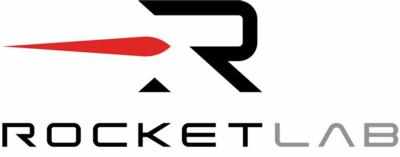Fri, Nov 04, 2022
'Catch Me If You Can' Mission Promises Spaceflight and Spectacle
Rocket Lab, the publicly traded, American space-launch concern and maker of the highly-successful Electron Rocket—a proper noun, not an allusion to the contraption’s workings—has confirmed that its upcoming Catch Me If You Can mission will conclude with an attempt to “catch” the rocket’s first stage with a modified Sikorsky S-92 helicopter as the former descends, under parachute canopy, from Earth’s upper atmosphere.

In May 2022, after four years of developing the requisite systems and procedures, Rocket Lab made its inaugural attempt to recover an Electron booster by helicopter during the company’s There and Back Again mission. The maneuver was partially successful—which is to say the helicopter crew “caught” the booster as it drifted Earthward, but had to release the thing when the load it imposed shifted beyond pre-determined safety limits.
Rocket Lab CEO and founder Peter Beck states: “Our first helicopter catch only a few months ago proved we can do what we set out to do with Electron, and we’re eager to get the helicopter back out there and advance our rocket reusability even further by bringing back a dry stage for the first time.”

Rocket Lab’s Catch Me If You Can mission is scheduled to lift-off from Pad “B” at Rocket Lab’s Launch Complex 1 on New Zealand's North Island during a launch window opening 04 November UTC. The launch—the 32nd of an Electron rocket—will carry the Swedish National Space Agency’s (SNSA) Mesospheric Airglow/Aerosol Tomography and Spectroscopy (MATS) satellite—a platform from which the SNSA seeks to investigate atmospheric waves for purpose of better understanding how the upper layers of Earth’s atmosphere interact with wind and weather patterns closer to the planet’s surface.
The recovery aspect of the Catch Me If You Can mission comprises five key events:
- Shortly before lift-off, Rocket Lab’s customized Sikorsky S-92 helicopter will deploy to a maritime capture zone approximately 160-nautical-miles off New Zealand’s Banks Peninsula.
- At approximately T+2:32 minutes into the mission, Electron’s first and second-stages will separate—the rocket’s second-stage and its MATS payload continuing to orbit while Electron’s first-stage commences its descent to Earth. As it reenters the atmosphere, the first-stage is expected to reach speeds as high as 4,475-knots and temperatures as hot as 2,400 °C (4,352 °F).
- At approximately T+7:20 minutes, the returning first-stage will deploy a drogue parachute, followed shortly thereafter by a larger main parachute. The double-deployment of canopies helps slow the vehicle from 4,475-knots to a mere 19-knots.
- As the first-stage enters the capture zone, Rocket Lab’s recovery helicopter will match the rocket’s lateral-velocity and descent-rate, then attempt to grab hold of a trailing parachute engagement line by means of a hook.
- Once captured and secured, the recovered first-stage will be transported to Rocket Lab’s Auckland Production Complex, where its nine Rutherford engines, assorted fuel-tanks, manifolds, and sundry giblets will be inspected by technicians who will determine the components’ suitability for re-use.
To date, Rocket Lab’s Electron launch vehicle has advanced national security, scientific research, space debris mitigation, Earth observation, climate monitoring, and communications by delivering more than 150 satellites to orbit for both private and public sector organizations. The company’s Photon spacecraft platform has been selected by NASA to support the space agency’s planned missions to the Moon and Mars, as well as the first private commercial mission to Venus.
More News
Hazardous Weather Information Summary of significant meteorological information (SIGMET/WS), convective significant meteorological information (convective SIGMET/WST), urgent pilot>[...]
Aero Linx: The T-6 Racing Association The T-6 Racing Association is all about T-6‘s and racing. Our mission is to bring great racing to our fans in Reno and other venues wher>[...]
Also: Electra Aero, AMO-CBP v Smugglers, Naval King Airs, Boeing Deal To the surprise of everyone involved, Waco Kitchen shut down both airport operations with little warning and h>[...]
Also: WACO Kitchen Bails, French SportPlane Mfr to FL, Dynon-Advance Flight Systems, Innovation Preview Bobby Bailey, a bit of a fixture in sport aviation circles for his work with>[...]
Also: Virgin Galactic, B-29 Doc to Allentown, Erickson Fire-Fighters Bought, FAA Reauthorization After dealing with a big letdown after the unexpected decision by Skyreach to disco>[...]
 ANN's Daily Aero-Term (05.07.24): Hazardous Weather Information
ANN's Daily Aero-Term (05.07.24): Hazardous Weather Information ANN's Daily Aero-Linx (05.07.24)
ANN's Daily Aero-Linx (05.07.24) Airborne 05.01.24: WACO Kitchen, FAA Reauthorization, World Skydiving Day
Airborne 05.01.24: WACO Kitchen, FAA Reauthorization, World Skydiving Day Airborne Affordable Flyers 05.02.24: Bobby Bailey, SPRG Report Cards, Skydive!
Airborne Affordable Flyers 05.02.24: Bobby Bailey, SPRG Report Cards, Skydive! Airborne 05.03.24: Advanced Powerplant Solutions, PRA Runway Woes, Drone Racing
Airborne 05.03.24: Advanced Powerplant Solutions, PRA Runway Woes, Drone Racing




